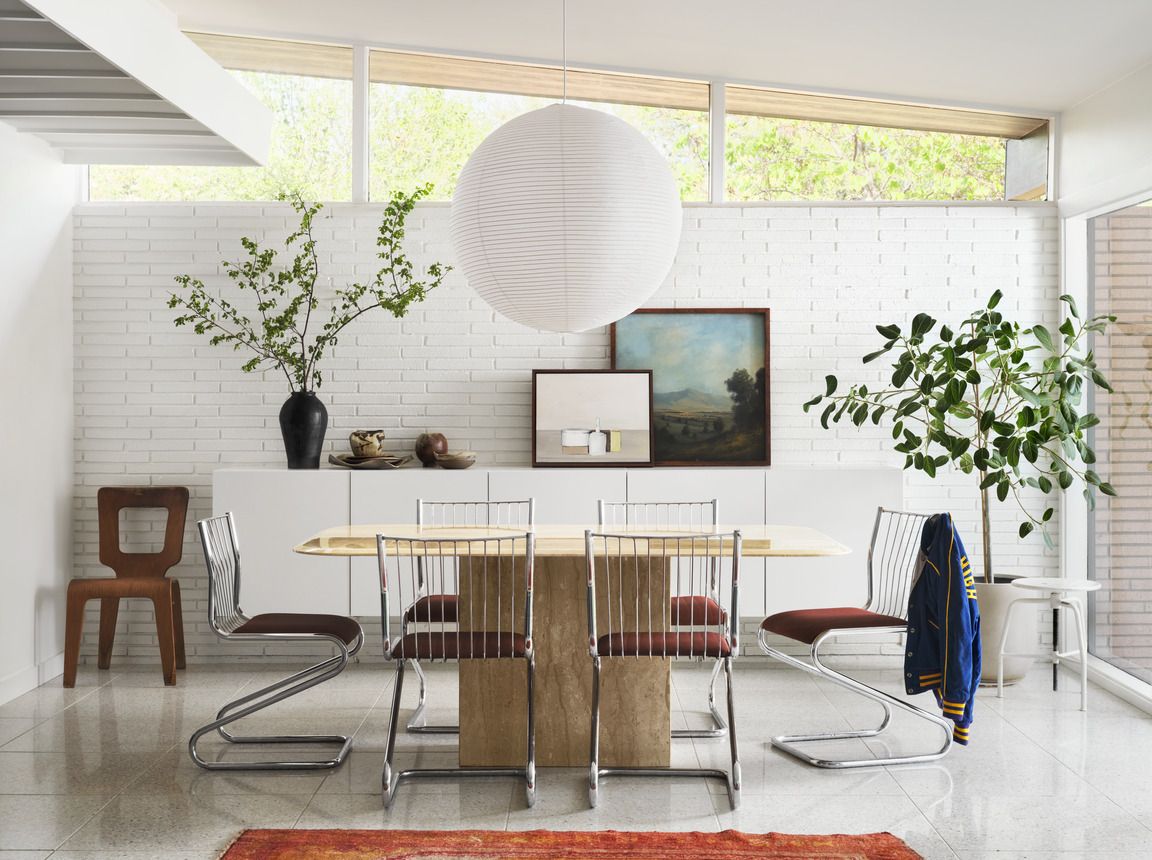Every Design Lover Needs to Know the Difference Between Modern and Contemporary Style
Every item on this page was hand-picked by a House Beautiful editor. We may earn commission on some of the items you choose to buy.Jump to:As youre perusing West Elm and eyeing all of the sleek-lined furniture and abstract artwork, you may find yourself wondering: what type of style is this exactly? Everything on the shelves is new, but it feels inspired by vintage design. Words like modern and contemporary may come to mind when looking at these types of pieces, but what is the true difference between these two styles? Although you may find them being used interchangeably, these words indicate entirely different things.Here is what you need to know about the differences between modern vs. contemporary styles, so you can properly categorize your personal taste (or throw out the rules altogether!).Related StoriesWhat Is Modern Style?Lisa PetroleModern style is characterized by its emphasis on clean lines, minimalism, and neutral colors. Originating from the modernism movement of the late 1800s, and heavily influenced by German Bauhaus and Scandinavian design principles, this style focuses on simplicity and functionality. It integrates organic materials and geometric shapes, often eschewing ornate decor to maintain its clean and uncluttered aesthetic.Brad Thornton, founder and principal of Thornton Projects, says that modern style refers to early 20th-century design, before the midcentury movement of the 1950salthough midcentury designs often fall under modern as well. It later morphed into postmodernism during the 1970s and 1980s.Related StoryWhat Is Contemporary Style?Jared Kuzia PhotographyContemporary style in interior design refers to the aesthetic and design approaches that reflect current trends and the way people live today, embodying modern values. Its origin can be traced back to the 1970s, coinciding with the rise of postmodernism. Initially, contemporary style was a blend of various styles, but it later established its distinct identity. Characterized by fluidity, a mix of neutral colors with bold hues, varied textures, expressive art, and smooth surfaces, contemporary style is always evolving. Related StoryWhat Are the Main Differences? The main difference between modern and contemporary styles lies in their origins and adaptability. Modern style, which emerged in the early 20th century, is defined by its distinct aesthetic, encapsulating clean lines, geometric shapes, and neutral color palettes. In contrast, contemporary style represents current trends and is more of a reflection of individual tastes and contemporary culture.However, as modern style has become more popular over the last 15 years it has interestingly become absorbed into contemporary style. Thornton specifically points to retailers like West Elm selling midcentury-style pieces as examples of modern style with a contemporary twist.Soumi SarkarRelated StoryModern vs. Contemporary FAQsBetween modern and contemporary, which style came first?Modern style, despite its name, actually originated in the late-19th to early-20th century. In contrast, contemporary style emerged as a design term in the 1970s or 1980s, and it continues to be widely used in today's design lexicon. Are contemporary and midcentury modern designs the same? While there are some similarities, contemporary and midcentury modern designs are distinct from each other. Midcentury modern is a later iteration of modernism, characterized by its consistent features such as linear details, sleek curves, natural materials like walnut and teak, tapered furniture legs, and bold, earthy colors. Although contemporary design may incorporate these elements, it emphasizes innovative uses of materials (like plastic), softer shapes, and a fluid style that evolves with current societal trends. Additionally, midcentury design originated in the 1940s, whereas contemporary style is a reflection of present-day preferences.Lisa PetroleCan you mix modern and contemporary design?Yes, absolutely. If you love both design styles, there are ways to bring them together in your home. For example, furniture with clean lines pairs beautifully with curved pieces, as both styles lean away from traditionalism and offer a modern aesthetic. Bold colors, often linked with modern style, can be used as vibrant accents amid the neutral tones typical of contemporary design. Additionally, you can mix textures and surfaces, like pairing a modern glass coffee table with a contemporary boucl sofa, creating a harmonious and stylish fusion in your living space.Follow House Beautiful on Instagram and TikTok.


